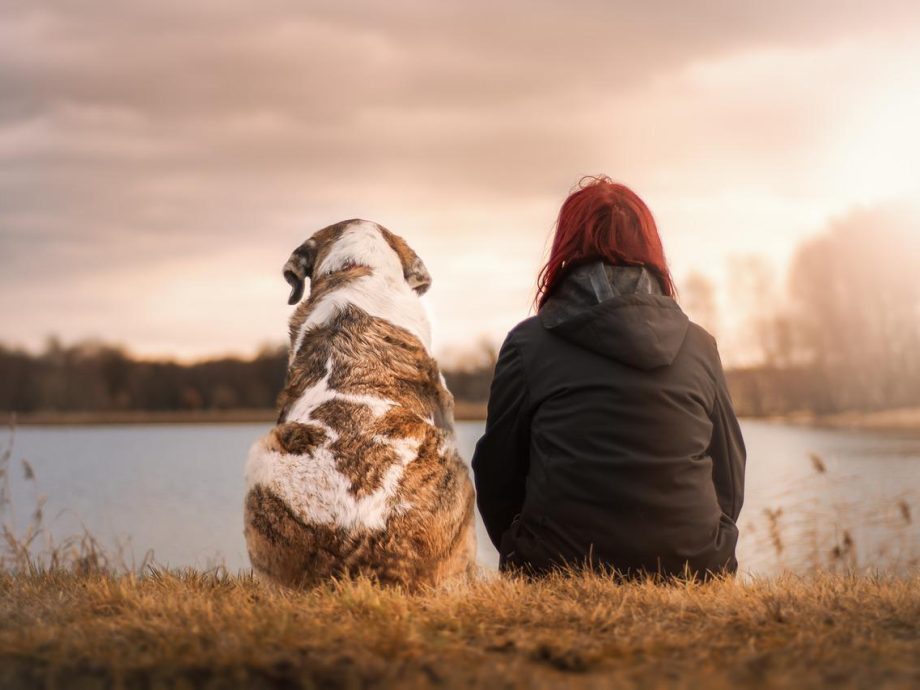Many of us can attest to the way that interacting with our pet makes us feel relaxed and calm and, at a basic level, this activity is driven by our human desire for a reward. In this case, reward comes in the form of companionship, affection or simply through being able to enjoy interaction with another individual, living creature.
The human - dog bond and why dogs are good for us
There is no doubt that such interactions are good for us. Research into the relationship between dogs and humans has shown that the simple act of stroking a dog can reduce anxiety and blood pressure, even in a community setting such as a hospital or retirement home. Cats and dogs have very different personalities and behavioural traits. Cats are essentially independent, solitary hunters by nature, whereas domestic dogs have evolved to exhibit a willingness to establish a dependent rapport with humans.
How did this relationship come about?
Animal behaviourists would explain this interdependency as an evolutionary process based on mutual reward – in the first instance, humans gained the services of a competent hunter, guard or family companion and dogs gained a safe, dry place to sleep and regular food. For each species, these rewards feature highly on our different spectrum of essential needs and it’s easy to see how the human-dog bond has become universally successful.
By selecting the types of canine characteristics that humans most valued such as intelligence, friendliness, protectiveness or other specialist skills like herding or retrieving, humans embarked on a process where over millennia, breeders have changed dogs’ personality traits and body shapes in order to reliably produce abilities that were preferred or, more critically in the early stages, found most useful.
Uniquely, this human-dog bond is a deep connection between two species. It is widely believed that the relationship may date back more than 100,000 years when the first domestic dogs were thought to have existed. Critically, the transition from performing tasks as a working companion to becoming a pet is thought to have happened from 600-1300 AD and this would have been the foundation for a more interactive relationship. This helps us to understand how dogs have developed the skills of understanding us and our behaviours, as well as anticipating and responding to our needs.
Why are dogs good for us?
Physiologically, when we interact with dogs, our heart rate decreases along with blood pressure, our breathing slows and we become more relaxed as the stress hormone, cortisol, also decreases. As we do with babies, our interaction with dogs increases our own level of oxytocin – a hormone that creates emotional bonding – and interestingly, interaction with humans also increases oxytocin levels in dogs. This reciprocal reward-mechanism helps to explain why dogs seek to anticipate human responses that may lead to praise or reward, stimulation or play, all of which have developed from the more basic needs for shelter and food.
Dogs have taken this even further.
Historically, that anticipation of human responses predisposed early dogs to be biddable and, as a result, willing to be encouraged, or trained, to do specific tasks. Over time, their openness to persuasion has evolved into an eagerness to please, to the extent that dogs can be observed carefully watching the facial expressions of their owners / trainers, as well as their body language, in anticipation of a behavioural cue or instruction. Such an overt display of co-operation continues to strengthen both the emotional and the physiological bonding between dog and owner, further developing teamwork and symbiotic reward.
No wonder the image of a man and his dog has become the icon for partnership in our busy world. Modern thinking about training dogs has long since moved on from the concept of punishment and reward. Most modern dog owners have willingly embraced the ethos of taking responsibility for all aspects of their dogs’ lives, physiological and emotional, far exceeding the functionality of man’s original partnership with the dog.








